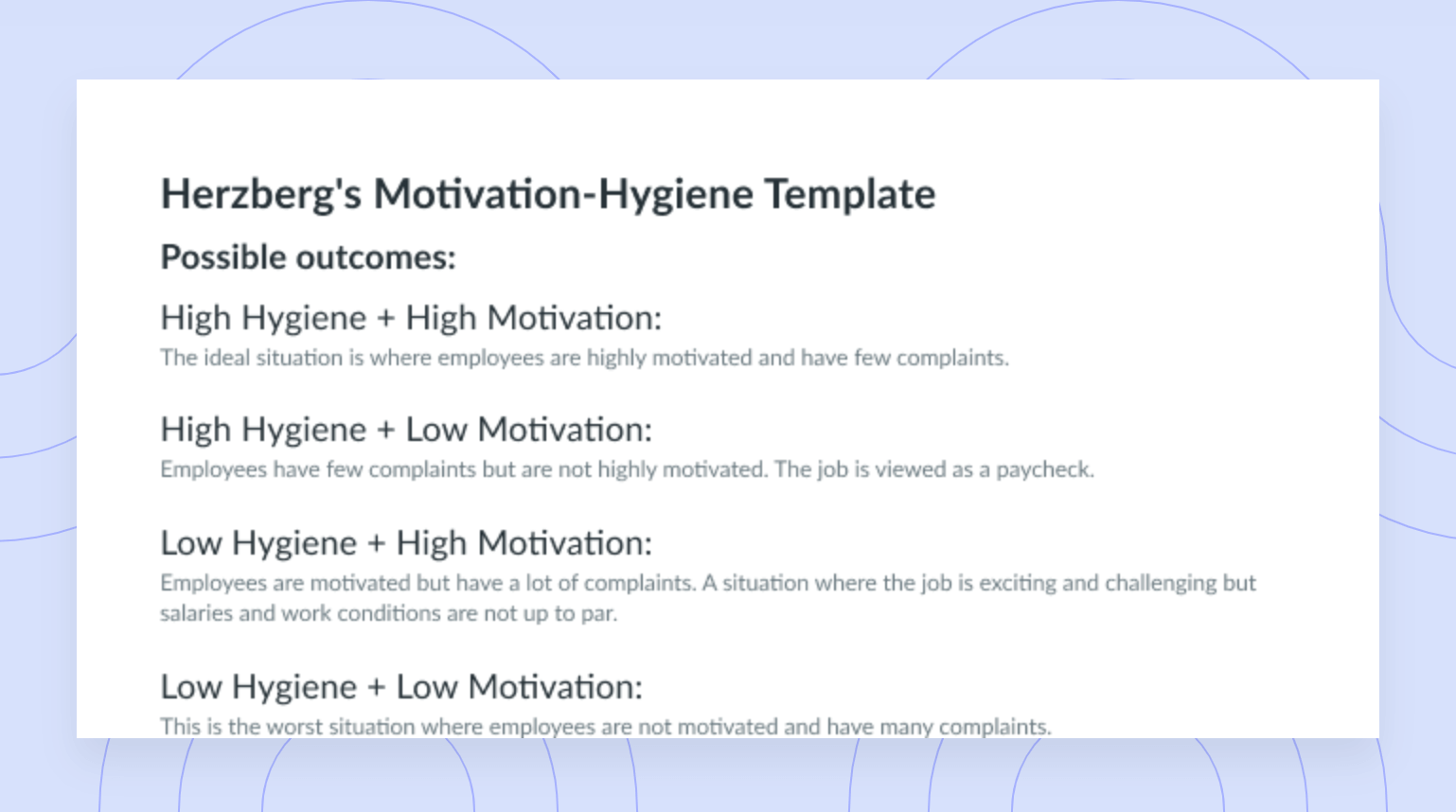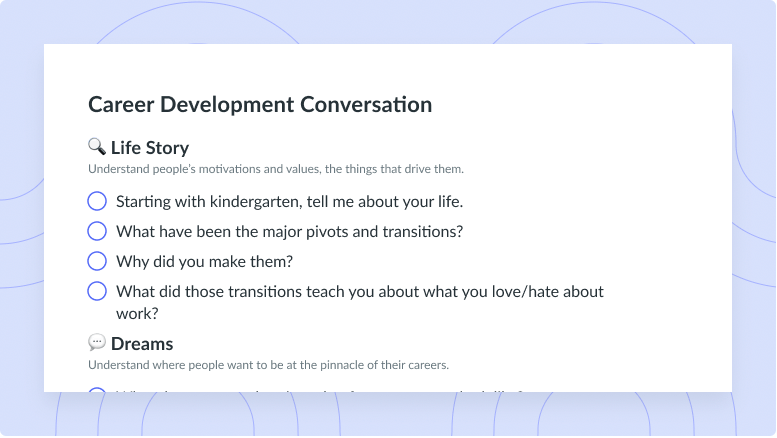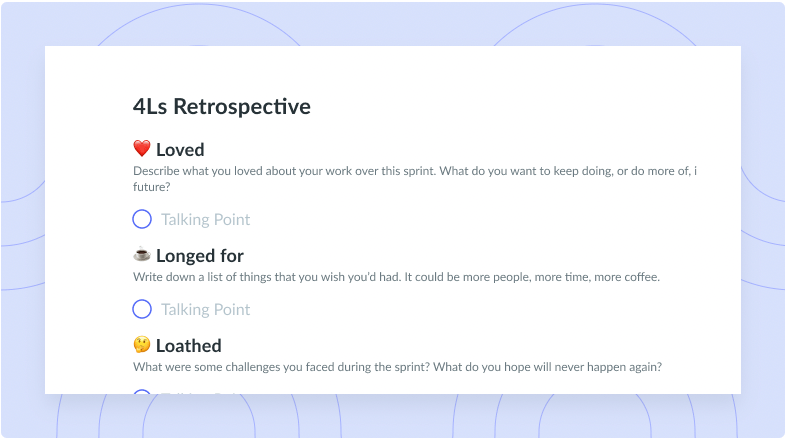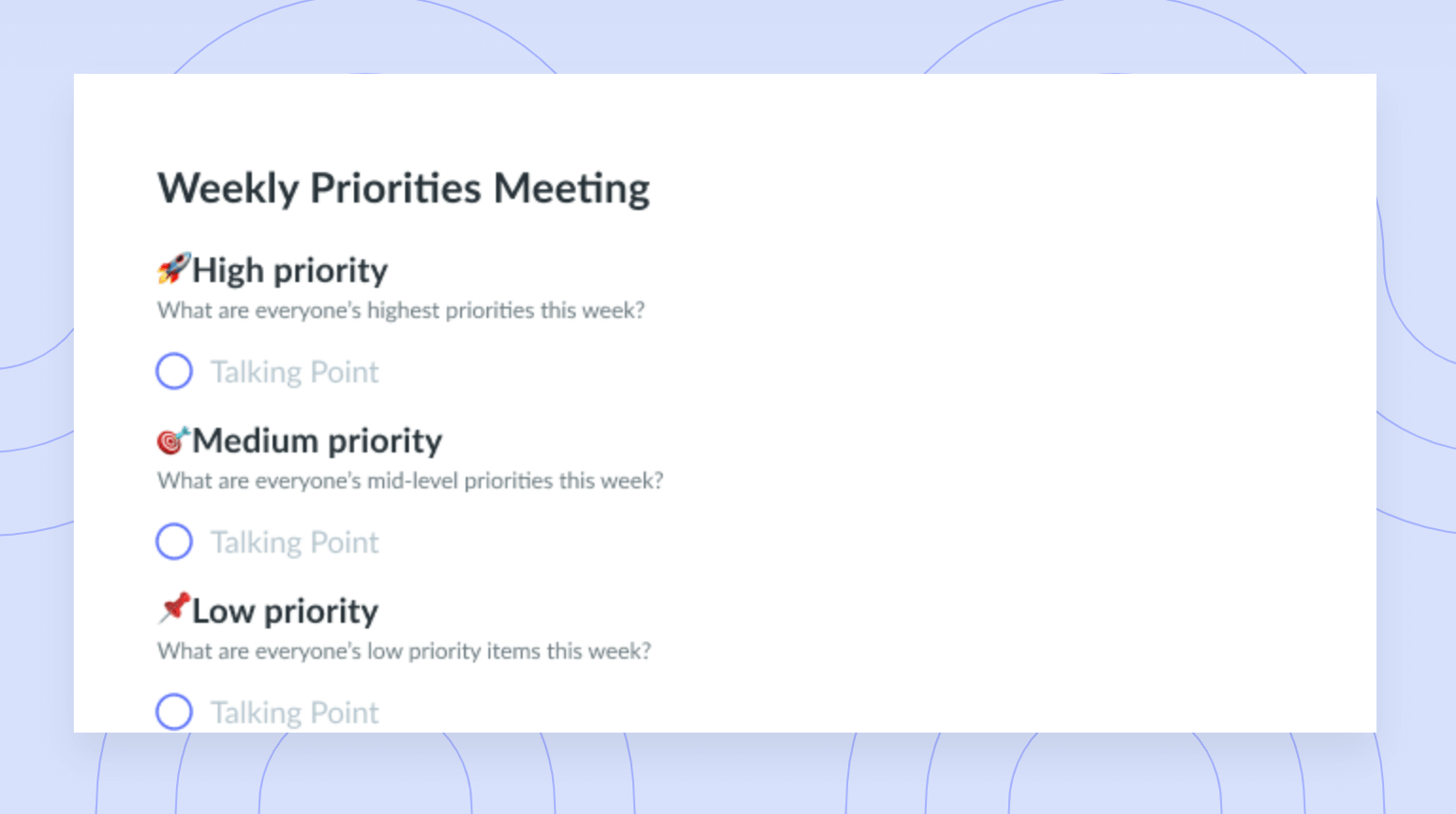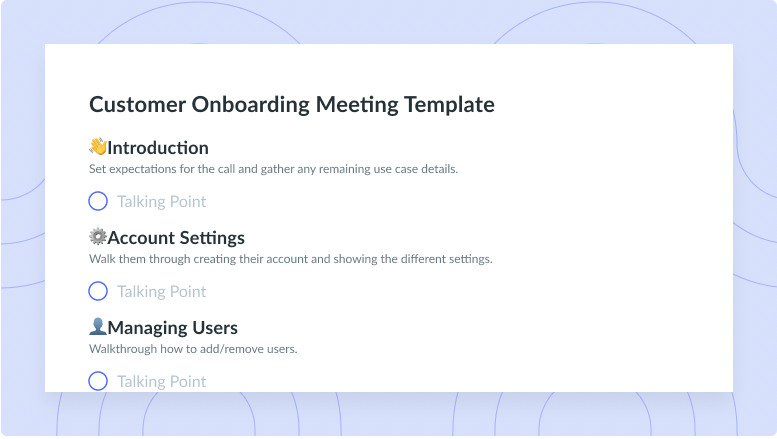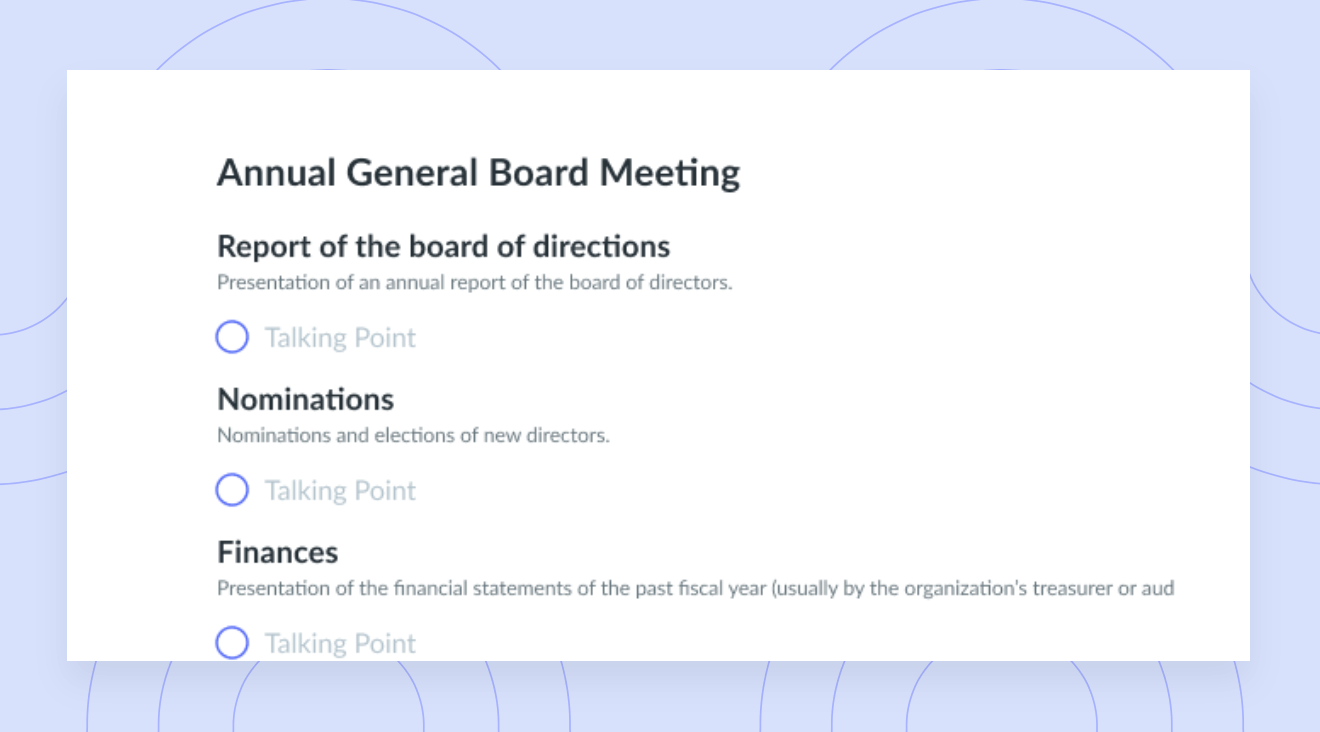How to Overcome Low Productivity at Work in 8 Useful Ways
Low productivity can often seem impossible to overcome – how can you just magically become more productive? The answer lies in these tips and tricks, which come pretty close to magic.
Productivity isn’t just some big fancy term you hear tossed around in corporate-speak. It’s actually not daunting at all: It’s just a measure of how efficiently you use your time at work. The more tasks you complete during your workday, the greater your productivity.
So, yes, the definition of productivity is relatively simple. Being productive, though, can be tougher. And when life stops you from being productive, it can be challenging to get back up to full speed. The below tips and techniques on how to overcome low productivity can help you dig back out of the hole.
How to overcome low productivity
Regaining productivity doesn’t have to be difficult if you use the right strategies. The challenge lies in sticking with those strategies long-term and staying productive. The below productivity tips can help you permanently improve your workplace efficiency – they’re all simple things you’ll be surprised you weren’t already doing.
- Manage your time (and tasks)
- Enjoy some rest and relaxation
- Don’t delay open-ended tasks
- Say no to unimportant meetings
- Avoid multitasking
- Don’t be a perfectionist
- Be proactive, not reactive
- Mute your notifications
1 Manage your time (and tasks)
Think about your most important tasks. How long does it take you to complete them? Write your guesses down and try actually timing yourself the next time you do them. You might be surprised to see a pretty inaccurate guess.
It can be tough to accurately gauge how much time you’ll need to complete a task. That’s a big impediment to a productive team. Another challenge: Your team members might only account for the time they dedicate to their work-specific tasks. That view excludes the time they need to check emails, attend meetings, or do work that, though important, isn’t quite a big task.
So how can you ensure proper time management across your organization? Time management apps are a start. They track your team’s working hours and deliver actionable reports that can help you use your time more productively.

Clear your head
Have a dedicated space for your meeting notes, action items, and feedback to stay organized and on top of your workload. Try using a tool like Fellow!
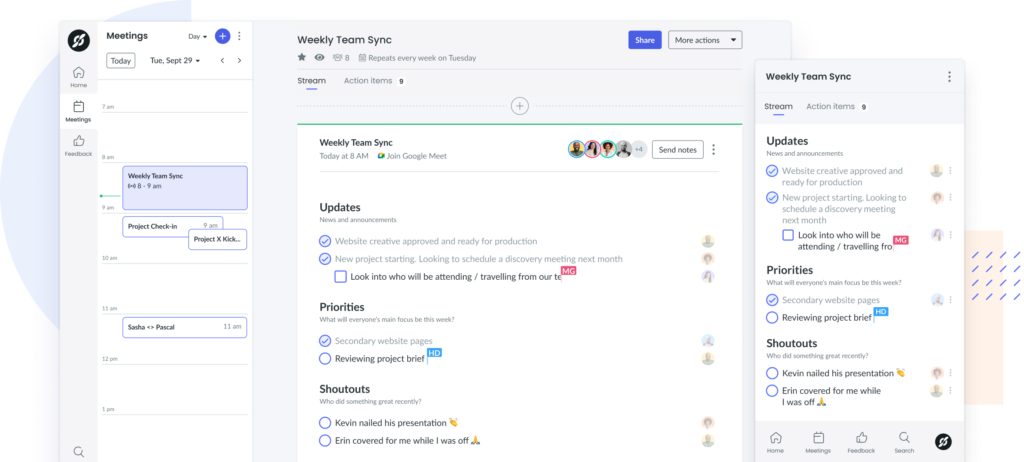
2 Enjoy some rest and relaxation
Taking breaks may seem counter to increasing productivity in the workplace, but short periods of rest can work wonders on an employee’s performance. Long periods of work without rest can build up mental fatigue that makes it difficult to concentrate on the next task. An exhausted brain isn’t as likely to quickly come up with great solutions to certain obstacles or notice some obvious errors. Remaining focused and productive throughout the day can be as simple as taking periodic breaks to keep your mind fresh.
3 Don’t delay open-ended tasks
It’s natural to view tasks with no hard deadline as low-priority. Really – it’s totally understandable if more pressing tasks wind up taking precedence over ones you can theoretically handle whenever. But here’s the thing: You’ll need to complete that low-priority task at some point. If you don’t, you could end up several months removed from the project’s start date with nothing to show.
An excellent way to create better workflows and increase productivity is to set personal deadlines for tasks without a timeframe. You should encourage your team to do the same. This way, you can properly prioritize tasks and give all your work the attention it deserves. Greater productivity is sure to result.
4 Say no to unimportant meetings
Yes, meetings are important. They’re perhaps the best way to share essential updates with your team and keep everyone on the same page. However, purposeless or poorly planned meetings – the ones that could’ve just been emails – can easily end up wasting time.
How many meetings have you left feeling like you could’ve skipped it or that it didn’t need to be held at all? How much progress could you have made on your tasks within the same timeframe? Meetings are often important, but saying no to clearly unimportant ones will give you tons of extra time to complete your tasks. With that extra time comes higher levels of productivity.
5 Avoid multitasking
Many employees assume that multitasking will help them complete their work faster, but that’s rarely the case. The human brain is wired to work on one thing at a time, so doing multiple tasks at once isn’t really possible. Instead, what we think of as multitasking is more like rapidly switching focus between individual tasks.
Occasionally, focusing on multiple projects at once can make sense, but for the most part, you and your team are just hamstringing your efficiency. You’ll usually be more successful spending your time on one task, then moving onto the next. Doing so might seem like spending more cumulative time on your tasks. In reality, multitasking means you’ll likely have to spend more time later improving on at most half-decent work. Multitasking is ultimately a time-waster that saps your productivity.
6 Don’t be a perfectionist
Nothing is ever perfect, and that’s okay. While there’s nothing wrong with wanting to do your best work, chasing perfection often leads to disappointment – perfection doesn’t exist. You and your team’s work will almost certainly reach a point where it meets all the requirements. Going above and beyond those expectations can keep you from starting other tasks.
It’s usually better to complete your projects on time. Then, if changes need to be made, you can always come back and edit as needed.
7 Be proactive, not reactive
You may have some fires to put out throughout the workday. Unexpected phone calls and emails can deliver brand new issues that you need to solve in a jiffy. And though it’s important to address these new issues, letting them dictate how you spend your time typically ends with you falling behind.
So instead of answering emails that can disrupt your work right when they arrive, schedule time to answer them later. This way, they don’t interfere with your usual tasks.
8 Mute your notifications
You’re deep into a perfect financial report when suddenly, an email notification juts in at the bottom-right of your screen. Of course you’re going to glance at it – that’s how the brain works. But if you start reading it for too long before you shut it out and get back to your report, your flow might be disrupted. What exactly were you working on? Where did that one genius thought go? Mute your notifications to avoid this problem – you can look at alerts between tasks and act on them later.
Factors that impact productivity
If your employee productivity rates have been low for a while, changes beyond the above tips may be necessary. Namely, you might want to look at the factors that can contribute to poor time management among your team members. Recognizing these variables is the first step to addressing them and possibly turning a negative into a positive. The factors you should look out for include:
- Employee health
A team of people in poor health can quickly drain employee morale and, in turn, their motivation to produce their best work. Exercise and a proper diet can grant employees extra vigor that can assist them throughout the workday. So too can workplace mental health programs that help your employees feel less stressed.
With both on your docket, your team’s brains should be firing on all cylinders. And though you can’t force anyone to improve their health, a robust health and wellness program opens the door.
- Company culture
New employees often mimic their colleagues’ behaviors – that’s the nature of adapting to an unfamiliar work environment. As a result, new hires might pick up – even if just subconsciously – on a culture that encourages cutting corners and not giving one’s all. Even employees who show up ready to work can feel discouraged if they’re alone in their enthusiasm. Conversely, positive company culture can have the opposite effect: encouraging employees to work their hardest. That’s how you reach top productivity.
- Team motivation
Team motivation and engagement are critical aspects of productivity, as they reflect how much a team cares about their work. When a team’s motivation is up, they typically produce higher quality work in less time. Low motivation often has the opposite effect.
Most ways to increase engagement and motivation won’t have the exact same effects on every employee. That said, one tried-and-true approach is to go out of your way to express employee appreciation.
- Work environment
Where company culture refers to how employees reflect an organization’s values, a work environment describes the relationship among team members. You can forge a great work environment through effective project management – working toward a shared goal requires caring for tasks and employee health equally.
Make sure employees feel safe in sharing their opinions during your stand-up meetings. Give every idea on the table equal weight so every team member can contribute in a meaningful way. Such an environment can lead to more effective brainstorming and more creative solutions to your biggest obstacles. It’s a great way to do more work in less time.
- Employee personalities and skillsets
Every team member brings something unique to the table. No two employees will be exactly alike, and they’ll each have unique strengths and weaknesses. That’s true of both their personalities and their skillsets. Either way, placing people in positions where they excel can increase employee productivity by leaps and bounds.
- Workflows and processes
Effective organization is the bedrock of productivity – it’s difficult to complete tasks on time when you don’t know what you’re doing and when. A clear schedule leads to equally clear goals, so your team can fully devote itself to the tasks at hand. The result is, of course, more productivity.
For a workflow to increase your productivity, it should be uncluttered and fully comprehensible. This way, your employees can manage a constant flow of new information and work without smaller concerns bogging them down.
A path to productivity
Many teams and employees will encounter dips in productivity in their work life. These periods are as inevitable as stress, low motivation, or an overabundance of smaller projects. None of this means you can’t climb out of a temporary slump.
The tips above can teach you how to overcome low productivity, and they’re even easier to heed with the help of several apps. Fellow, for example, can help enhance your team’s productivity through tools that ensure your meetings are efficient and purposeful. You can create and send out collaborative meeting agendas, assign meeting action items in real-time, and organize ideas via shareable notes. With these features and more, your team gets time back to stay atop their tasks and do their absolute best work.









